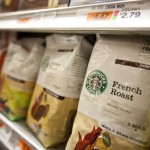Yesterday’s trade (in GMT terms) saw GBP/USD within the range of 1.3168-1.3343. The pair closed at 1.3195, plummeting 1.06% compared to Mondays close. It has been the 183rd drop in the past 337 trading days and also the steepest one since August 4th. The daily low has been a level unseen since September 1st, when a low of 1.3128 was registered. The major pair has pared its advance to 0.43% so far during the current month, after losing 0.72% in August.
At 7:27 GMT today GBP/USD was edging up 0.13% on the day to trade at 1.3212. The pair touched a daily high at 1.3230 during the early phase of the European trading session, overshooting the daily R2 level, and a daily low at 1.3166 during early Asian trade.
On Wednesday GBP/USD trading may be influenced by the following macroeconomic reports as listed below.
Fundamentals
United Kingdom
Jobless Claims, ILO Unemployment Rate
The number of jobless claims in the United Kingdom probably rose by 1 800 in August from a month ago, according to market expectations. In July, claims unexpectedly fell by 8 600, following a revised up increase by 900 in the prior month. It has been the first drop since February.
The rate of unemployment in the UK, estimated in accordance with ILO (International Labour Organization) standards, probably remained at 4.9% for a third consecutive three-month period during the three months to July compared to the same period a year ago. It has been the lowest rate since the three-month period to September 2005.
During the period April-June there were 31.75 million people in employment, or an increase by 172 000 compared to the three months to March 2016. Compared to April-June 2015, the figure represented an increase by 606 000. 23.22 million persons were in full-time employment during the period April-June, or 374 000 more compared to the same period a year earlier. At the same time, 8.53 million persons were in part-time employment, or an increase by 231 000 compared to a year ago. The rate of employment was registered at 74.5%, or the highest since 1971, when records were initiated.
During the period April-June, 1.64 million people were unemployed, or a decrease by 52 000 compared to those reported during the three months to March 2016. Compared to April-June 2015, the figure represented a decrease by 207 000. It has also been the lowest number of unemployed people since the three months to May 2008.
In April to June, there were 8.84 million people aged between 16 and 64, who were out of work and not seeking or available for employment, according to data by the Office for National Statistics (ONS). This represented a decrease by 58 000 compared to the three-month period to March 2016 and a drop by 179 000 compared to April-June 2015.
Average earnings including bonuses probably went up 2.1% during the three months to July 2016 compared to the same period a year ago. In the three-month period to June 2016 earnings grew 2.4% year-on-year to GBP 501 per week, or the most since the three months to October 2015. Pay growth has been above the rate of consumer inflation since the beginning of 2015, which led to a sound increase in real income. However, wage growth is still lower compared to the period preceding the financial crisis.
In case the rate of unemployment met expectations or fell even further while the number of claims increased at a lesser-than-projected pace in August, this would have a strong bullish effect on the Sterling. The official report by the ONS is due out at 8:30 GMT.
United States
Import and Export prices
Prices of imported goods in the United States probably fell 0.1% in August, according to market expectations, following five consecutive months of increases. In July import prices were 0.1% higher from a month ago, as prices of non-fuel items went up 0.3%, or the most since March 2014, while fuel import prices dropped 2.5%. In annual terms, import prices were 3.7% lower in July, which has been the 24th consecutive month of decline. Generally, lower import prices of goods suggest lower rates of consumer inflation.
Prices of exported goods from the United States probably increased for a fifth straight month in August, going up at a monthly pace of 0.1%, according to market expectations. In July export prices rose 0.2% from a month ago, as non-agricultural export prices increased 0.3%, supported by higher prices of industrial supplies and materials and consumer goods. On the other hand, agricultural export prices dropped 0.4% in July, dragged down by lower prices of corn and wheat. In annual terms, export prices slumped 3% in July, or for a 23rd month in a row. Lower prices of exported goods generally bolster demand abroad, and as US trade accounts for 20% of international trade relations, this also tends to be dollar positive.
The Department of Labor is expected to release the official numbers at 12:30 GMT.
Bond Yield Spread
The yield on UK 2-year government bonds went as high as 0.256% on September 13th, or the highest level since June 27th (0.260%), after which it closed at 0.255% to add 8.5 basis points (0.085 percentage point) compared to September 12th.
Meanwhile, the yield on US 2-year government bonds climbed as high as 0.814% on September 13th, or the highest level since September 1st (0.821%), after which it fell to 0.798% at the close to add 2.4 basis points (0.024 percentage point) compared to September 12th.
The spread between 2-year US and 2-year UK bond yields, which reflects the flow of funds in a short term, narrowed to 0.543% on September 13th from 0.604% on September 12th. The September 13th yield spread has been the lowest one since August 4th, when the difference was 0.535%.
Daily, Weekly and Monthly Pivot Levels
By employing the Camarilla calculation method, the daily levels of importance for GBP/USD are presented as follows:
R1 – 1.3211
R2 – 1.3227
R3 (Range Resistance – Sell) – 1.3243
R4 (Long Breakout) – 1.3291
R5 (Breakout Target 1) – 1.3347
R6 (Breakout Target 2) – 1.3370
S1 – 1.3179
S2 – 1.3163
S3 (Range Support – Buy) – 1.3147
S4 (Short Breakout) – 1.3099
S5 (Breakout Target 1) – 1.3043
S6 (Breakout Target 2) – 1.3020
By using the traditional method of calculation, the weekly levels of importance for GBP/USD are presented as follows:
Central Pivot Point – 1.3318
R1 – 1.3397
R2 – 1.3526
R3 – 1.3605
R4 – 1.3684
S1 – 1.3189
S2 – 1.3110
S3 – 1.2981
S4 – 1.2852
In monthly terms, for GBP/USD we have the following pivots:
Central Pivot Point – 1.3126
R1 – 1.3387
R2 – 1.3634
R3 – 1.3895
R4 – 1.4155
S1 – 1.2879
S2 – 1.2618
S3 – 1.2371
S4 – 1.2123





